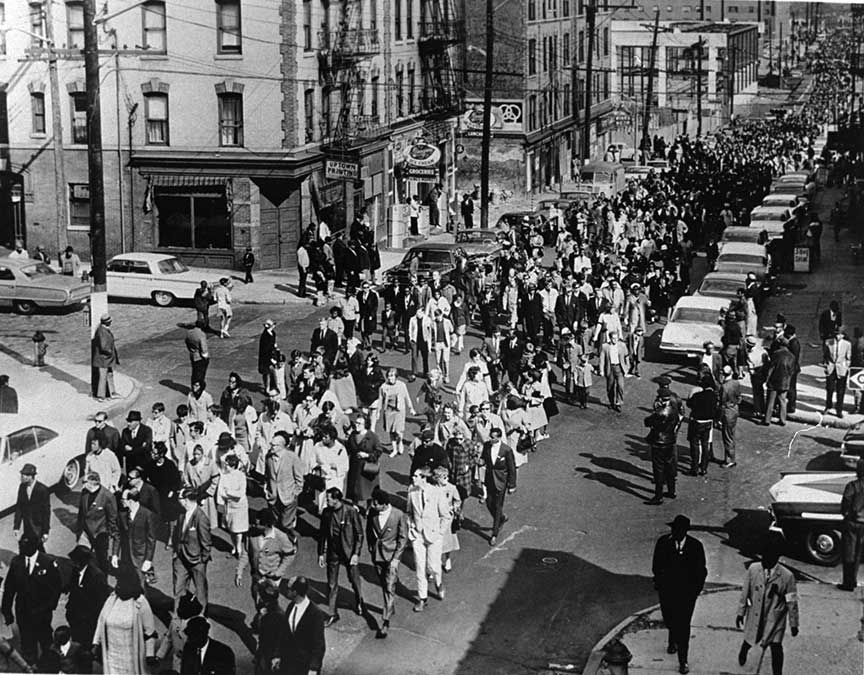1964 Selma to Montgomery March

In March 1964, Civil Rights protesters, led by Dr. Martin Luther King, marched from Selma to the State capital of Montgomery. The march took place under the protection of federal troops. |
In March 1965, Civil Rights protesters, led by Dr. Martin Luther King Jr., embarked on a historic march from Selma to the state capital of Montgomery, Alabama. This march was a pivotal moment in the Civil Rights Movement, highlighting the struggle for African American voting rights and drawing national attention to the injustices faced by Black Americans in the South. The march was organized in response to the violent suppression of earlier voting rights demonstrations in Selma. On March 7, 1965, known as "Bloody Sunday," peaceful protesters attempting to march from Selma to Montgomery were brutally attacked by state troopers and local law enforcement at the Edmund Pettus Bridge. The images of the violence broadcasted nationwide sparked outrage and galvanized support for the Civil Rights Movement. In the wake of Bloody Sunday, Dr. Martin Luther King Jr. called for a larger march to complete the journey to Montgomery. The call was answered by thousands of activists from across the country, including prominent figures from various civil rights organizations, religious groups, and labor unions. The marchers faced significant resistance from local authorities and segregationist groups, but their resolve remained unshaken. To ensure the safety of the marchers, President Lyndon B. Johnson intervened by federalizing the Alabama National Guard and dispatching federal troops to provide protection. This move was unprecedented and underscored the federal government's commitment to protecting the constitutional rights of its citizens. On March 21, 1965, under the protection of federal troops, approximately 3,200 marchers set out from Selma on a five-day, 54-mile journey to Montgomery. The marchers walked an average of 10 miles a day, camping at designated sites along the route. The federal troops ensured their safety, maintaining a buffer between the marchers and potential threats from hostile local residents. The journey was marked by a sense of solidarity and determination, as people from diverse backgrounds came together to demand justice and equality. On March 25, 1965, the marchers reached the Alabama State Capitol in Montgomery, where their numbers had swelled to around 25,000. Dr. King delivered a powerful speech on the steps of the Capitol, addressing the gathered crowd and calling for an end to racial discrimination and the protection of voting rights for all Americans. His speech, often referred to as "How Long, Not Long," emphasized the inevitability of justice and the moral urgency of the civil rights struggle. The Selma to Montgomery march had a profound impact on the Civil Rights Movement and American society. It drew widespread media coverage, bringing the realities of segregation and voter suppression to the forefront of national consciousness. The march also played a crucial role in the passage of the Voting Rights Act of 1965, which President Johnson signed into law on August 6, 1965. The Act prohibited racial discrimination in voting, ensuring greater protections for African American voters and significantly increasing voter registration in the South. The Selma to Montgomery march remains a symbol of courage, perseverance, and the power of nonviolent protest. It demonstrated the effectiveness of collective action in challenging injustice and securing fundamental rights. The march also highlighted the importance of federal intervention in protecting civil rights, setting a precedent for future government involvement in addressing systemic inequality. Today, the march is commemorated as a pivotal moment in American history, reminding us of the ongoing struggle for equality and the enduring legacy of the Civil Rights Movement. |
